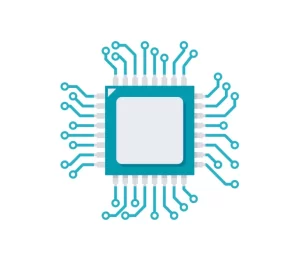(30-06-2022) समाचारपत्रों-के-संपादक
 Date:30-06-22
Date:30-06-22
Act Of Terrorism
Horrific Udaipur incident must lead to thorough investigation to see if there’s a bigger pattern
TOI Editorials
Following the gruesome murder of Kanhaiya Lal in Udaipur – which was plainly an act of terrorism – the course of investigation suggests that governments think this was not an isolated local incident. GoI yesterday directed the National Investigation Agency to take over the probe, with the search for international links being a key dimension. Rajasthan CM Ashok Gehlot echoed the view. He said the murder was meant to spread terror and the information available indicated the two perpetrators have contacts overseas.
It bears mention that the two terrorists, Mohmmad Riyaz Akhtari and Gaus Mohammad, who have freely admitted to murdering Lal, apparently belong to groups that believe that the “punishment” for “blasphemy” must be death. Indeed, the most chilling aspect of what Riyaz and Gaus did was the videography, reminiscent of ISIS-style brutality. Clearly, what happened in Udaipur requires a multi-level
and multi-agency response.
A thorough investigation by NIA into Lal’s murder, with the state government cooperating, and quick, definitive results are the best first responses to the act of terrorism. Interminable delays do great harm to the cause of fighting terror, especially when social situations are volatile. The other crucial job for investigators is to figure out whether Riyaz and Gaus are part of a deadly pattern that will emerge over time. If that’s the case, it’s imperative that agencies are proactive in their response.
There’s also the question of the quality of local policing. The victim, Lal, had communicated a threat to his life in a formal complaint. For sure, the state has suspended an assistant sub inspector in Udaipur for negligence. But this horrifying incident shows the cost of states’ reluctance to implement even most basic police reforms. In state after state, and in incident after incident, local police forces have been found wanting even when clear indications of threats have been available. And finally, all political parties must keep an eye on groups and individuals who can say or do things that aggravate an already volatile situation.
Date:30-06-22
Semiconductors: Heroes Of The New Digital World
Covid showed the indispensability of chips, India must secure a manufacturing ecosystem for them
Sagar Sharma and Urmi Tat, [ The writers are from the Electronics System Design and Manufacturing (ESDM) team at Invest India ]
 In today’s digitally interconnected world, semiconductors are our constant companions. Semiconductors store our smiles (memory chips), help us connect to our loved ones (communication chips), wake us up in the morning (logic chips), and even aid in monitoring our vitals (sensor chips) when we are asleep. They are also the guiding force behind the navigation system while we drive and enable us to parallel park effortlessly.
In today’s digitally interconnected world, semiconductors are our constant companions. Semiconductors store our smiles (memory chips), help us connect to our loved ones (communication chips), wake us up in the morning (logic chips), and even aid in monitoring our vitals (sensor chips) when we are asleep. They are also the guiding force behind the navigation system while we drive and enable us to parallel park effortlessly.
Decoding chips :
A chip essentially comprises electronic circuits layered over a substrate which is typically silicon. Although all chips have a basic mandate, either to store, transmit and process data at optimal speeds, they are tweaked to accommodate the requirements of the devices they are fit into. Accordingly, chips can be broadly classified into logic and memory. Logic chips, which account for the largest industry share, are responsible for processing information while memory chips are designed to store information. Processors, graphic cards etc are examples of logic chips while RAM, SD cards are examples of memory chips. A typical electronic device, however, would need a combination of these chips.
Bringing semiconductors alive :
The making of a chip comprises a series of intense and complex processes which demand extreme precision and large capital investments. Riding on the legendary Moore’s law, the scale and complexity of semiconductor chips have grown exponentially. They have come a long way; from a few hundred transistors (4004 in 1971) to billions of transistors (Ryzen processor in 2020). The modern semiconductor chips are smarter, smaller, lighter and “cooler”.
Semiconductor chips are first designed in R&D centres using specialised software-based Electronic Design and Automation tools. The Graphic Design System files containing the design are then transferred to a fab/foundry to initiate the manufacturing process. Semiconductor chip manufacturing is a sequential and multi-step process in which electronic circuits are made in a very specialised and highly controlled environment, possibly the cleanest places on earth. Specific operations are performed on the silicon wafer over the course of 2-3 months.
Following this are the downstream activities which are less capital-intensive and more labour-intensive involving testing, packaging and assembly, and are carried out by OSAT (Outsourced Semiconductor Assembly and Test) companies. Due to the functional specialisation and complex nature of activities in the semiconductor value chain, various business models have evolved over the years starting from Integrated Devices Manufacturers (performing design-manufacturing and packaging in house), Fabless (only design), Foundry (only fabrication) and OSAT.
The core of future technologies :
The importance of semiconductors has been accelerated by the proliferation of paradigm shifting technologies like AI and blockchain. From 5G technologies to the evolution of Yuval Noah Harari’s Homo Deus– a mix of flesh and silicon – in the near future, semiconductors have centred themselves in the effective functioning of our lives. The indispensability of semiconductors became even more evident during the Covid pandemic when the whole world came to a standstill and the only way forward was digital.
The semiconductor ushered us to the new reality and enabled schools, offices and businesses to operate and remain functional from the backend. Semiconductor chips in display drivers, video and audio processing units, and communication chips kept the world running. It also powered the supercomputers which enabled the rapid development of the Covid vaccine, thus ensuring the resumption of economic and social activities globally.
India joins the chip race :
India has not been far behind in prioritising semiconductor manufacturing as the pillar of its growth story for the future. PM Modi has stated that India has “no option” but to be self-reliant when it comes to key items such as semiconductors. Import of electronic goods accounted for $54 billion in 2020, a significant percentage of which came from China. This is strategically a point of concern, apart from being unsustainable in terms of balance of payments and forex.
Semiconductors are also the bedrock of all ICT equipment and thus indigenisation of the supply chain has positive implications across sectors like telecom, defence, space, internet surveillance, power, automobile etc. Further, there is a large indigenous market for semiconductors. In terms of demand, India’s semiconductor consumption was $20 billion in 2020 and it is growing at a CAGR of 15%. In this regard, the Semicon India programme of the government shows its commitment to securing a semiconductor manufacturing ecosystem in India. It provides attractive fiscal and non-fiscal incentives for companies to set up production across the value chain. The success of Semicon India is also fundamental to Make in India and Digital India, and is key for India’s integration into the global value chain.
 Date:30-06-22
Date:30-06-22
The anti-defection law — political facts, legal fiction
The crisis in Maharashtra and even earlier instances are grim reminders of what the Tenth Schedule can and cannot do
Mayuri Gupta is the Milon K. Banerji Fellow at the Vidhi Centre for Legal Policy and works with Charkha, Vidhi’s Constitutional Law Centre. Ritwika Sharma is a Senior Resident Fellow at Vidhi and leads Charkha.
In the din of India’s electoral politics, floor crossing by legislators rarely goes out of public discourse. The practice of legislators from changing political parties during their term continues unabated in Indian legislatures despite the Tenth Schedule having been inserted into the Constitution in 1985. Commonly known as the ‘anti-defection law’, it was meant to arrest the practice of legislators from changing political affiliations during their term in office. The political crisis in Maharashtra, and many others before it, are grim reminders of what the Tenth Schedule can and cannot do.
Law on defections, ‘mergers’
Instances of floor crossing have long gone unchecked and unpunished. In part, this can be attributed to the exemption given to mergers between political parties which facilitate bulk defections. In 2019, MLAs in the Goa Legislative Assembly from the Indian National Congress (INC) and the Maharashtrawadi Gomantak Party (MGP), crossed over to the Bharatiya Janata Party (BJP). The Speaker of the Assembly as well as the Goa Bench of the Bombay High Court dismissed the pleas seeking disqualification of these MLAs. Both these authorities held that because the MLAs formed two-thirds of their respective legislature parties, disqualification under the Tenth Schedule was not possible. In other words, there was a “deemed merger” of the INC and the MGP with the BJP.
The second paragraph of the Tenth Schedule allows for disqualification of an elected member of a House if such member belonging to any political party has voluntarily given up membership of their party, or if they vote in the House against such party’s whip. Paragraph 4 creates an exception for mergers between political parties by introducing three crucial concepts — that of the “original political party”, the “legislature party”, and “deemed merger”. A “legislature party” means the group consisting of all elected members of a House for the time being belonging to one political party, whereas an “original political party” means the political party to which a member belongs (this can refer to the party generally, outside of the House). Interestingly, Paragraph 4 does not clarify whether the original political party refers to the party at the national level or the regional level, despite the fact that that is how the Election Commission of India recognises political parties.
How does Paragraph 4 then approach mergers? Paragraph 4 is spread across two sub-paragraphs, a conjoint reading of which suggests that a merger can take place only when an original party merges with another political party, and at least two-thirds of the members of the legislature party have agreed to this merger. It is only when these two conditions are satisfied that a group of elected members can claim exemption from disqualification on grounds of merger.
The reality
Paragraph 4 , however, is drafted in such a convoluted way that it renders itself open to multiple interpretations. The second sub-paragraph (of Paragraph 4) says that a party shall be “deemed” to have merged with another party if, and only if, not less than two-thirds of the members of the legislature party concerned have agreed to such merger. Given that in most cases there is no factual merger of original political parties at the national (or even regional) level, Paragraph 4 seems to be creating a “legal fiction” so as to indicate that a merger of two-third members of a legislature party can be deemed to be a merger of political parties, even if there is no actual merger of the original political party with another party. At least that is how High Courts in India are interpreting the merger exception.
In statutory interpretation, “deemed” has an established understanding. The word “deemed” may be used in a law to create a legal fiction, and give an artificial construction to a word or a phrase used in a statute. In other cases, it may be used to include what is obvious or what is uncertain. In either of these cases, the intention of the legislature in creating a deeming provision is paramount.
What could Parliament’s intention have been in creating a legal fiction under Paragraph 4? The merger exception was created to save instances of the principled coming together of political groups from disqualification under the anti-defection law, and to strike a compromise between the right of dissent and party discipline. In the absence of mergers of original political parties, the deeming fiction could, presumably, be used as a means to allow mergers of legislature parties. However, reading Paragraph 4 in this manner would empower legislature parties to solely merge with another party, and thus, practically ease defection. Defection gets easier in smaller legislative assemblies, where even a sole member can account for two-thirds of the legislature party’s strength to cross the floor without attracting disqualification.
On the other hand, what happens if both sub-paragraphs of Paragraph 4 are read conjunctively? For a valid merger then, an original political party has to first merge with another political party, and then two-thirds of the legislature party must support that merger. Practically speaking though, this would yield potentially absurd results. Given the politics of current times, stark differences in parties’ respective ideologies, and deep-seated historical rivalries, it is unimaginable how a merger between major national or regional parties would materialise.
Neither of these two interpretations complement the ‘mischief’ that the Tenth Schedule was expected to remedy — that of curbing unprincipled defections which endanger the foundations of our democracy. Presently, while individual Members of Legislative Assemblies remain vulnerable to disqualification for crossing the floor, group defections remain exempt. The criticisms levelled against the exemption given to splits in political parties – that it facilitated defection by groups – applies equally to mergers.
Revisit, if not delete
In a situation where either reading of Paragraph 4 in its current form yields undesirable results, its deletion from the Tenth Schedule is a possible way forward. This thought is hardly novel, for the Law Commission in 1999 and the National Commission to Review the Working of the Constitution ((NCRWC) in 2002 made similar recommendations. Till that happens, an academic revisiting of the Tenth Schedule by the Supreme Court, so as to guide future use of the anti-defection law, is timely and should happen soon. That would do a world of good for democracy in India.
 Date:30-06-22
Date:30-06-22
स्त्रियों के लिए गर्भपात का अधिकार मायने रखता है
आशुतोष वार्ष्णेय, ( ब्राउन यूनिवर्सिटी, अमेरिका में प्रोफेसर )
क्या लोकतंत्र में कोई अधिकार देकर वापस लिया जा सकता है? मौजूदा अंतरराष्ट्रीय-विमर्श में यह प्रश्न एक बौद्धिक और राजनीतिक चिंता का विषय बन गया है। इसे डेमोक्रैटिक बैकस्लाइडिंग कहा जा रहा है, जिसमें भले लोकतांत्रिक व्यवस्था ध्वस्त न हो, लेकिन वो क्रमश: कमजोर जरूर होती चली जाती है। 2016 में डोनाल्ड ट्रम्प के प्रेसिडेंट बनने के बाद से अमेरिका का नाम डेमोक्रैटिक बैकस्लाइडिंग या लोकतांत्रिक फिसलन की बहस में बारम्बार आया है। लेकिन अभी तक इस बहस का अमेरिकी पहलू कमोबेश इस तक सीमित रहा था कि नस्ली रूप से अल्पसंख्यकों के अधिकारों पर कुछ प्रतिबंध लगाए जाएं या नहीं, लेकिन ये बहस वोटिंग के अधिकार तक नहीं पहुंची थी।
बीते दिनों जब अमेरिका की सुप्रीम कोर्ट ने 1973 के रो वर्सेस वेड केस में दिए गए गर्भपात के अधिकार को समाप्त करने का निर्णय लिया तो यह बहस और व्यापक हो गई, क्योंकि अब यह मतदाताओं के दमन से आगे बढ़कर नागरिक अधिकारों के दायरे में प्रवेश कर चुकी है। अदालत ने 5-4 के बहुमत से फैसला सुनाया कि अब अमेरिका में महिलाओं को गर्भपात का अधिकार नहीं होगा। राज्यों के विधान-मंडल चाहें तो इस बारे में स्वतंत्र निर्णय ले सकते हैं। लेकिन अदालत के निर्णय के चंद ही घंटों के बाद अनेक राज्यों में गर्भपात पर प्रतिबंध लगा दिया गया। अलबत्ता डैमोक्रेट सरकारों वाले राज्य गर्भपात के अधिकार की रक्षा करने का भरसक प्रयास करेंगे, लेकिन अपेक्षा जताई जा रही है कि अमेरिका के पचास में से लगभग आधे राज्य अदालत के फैसले का समर्थन करेंगे। यह लोकतांत्रिक फिसलन का नया आयाम है, जिसमें अब अधिकारों को वापस लिया जा रहा है। चुनाव-दर-चुनाव बहुसंख्य अमेरिकियों ने गर्भपात के अधिकार का समर्थन किया है, वैसे में अदालत के फैसले को सामूहिक आकांक्षा का हनन ही कहा जाएगा। तब भी यह इस निर्णय की मानक आलोचना नहीं हो सकती, क्योंकि अदालतें लोकप्रिय-धारणा से नहीं चलतीं, वे संवैधानिक औचित्य से संचालित होती हैं।
1973 का अदालती आदेश 14वें संविधान संशोधन (1868) पर आधारित था। अदालत का कहना था कि यह संविधान संशोधन स्वतंत्रता और निजता की रक्षा करता है, जिसमें राज्यसत्ता हस्तक्षेप नहीं कर सकती। यानी भले ही 1787 में निर्मित अमेरिकी संविधान में गर्भपात का उल्लेख न हो, लेकिन 1868 का संविधान संशोधन गर्भपात के अधिकार की रक्षा करने वाला था। क्योंकि नागरिक स्वतंत्रता में संतान उत्पन्न करने या न करने जैसे निजी निर्णय भी शामिल होते हैं। अलबत्ता 1973 में अदालत ने यह भी कहा था कि यह आदेश परम नहीं है और ‘संभावित जीवन की रक्षा’ के दृष्टिगत उसकी सीमाएं हैं। यह तर्क उस अदालती आदेश का आधार बना, जिसमें सरकार को गर्भावस्था के पहले तीन माह में हस्तक्षेप के अधिकार से वंचित किया गया था, लेकिन राज्यसत्ता तीसरी तिमाही में गर्भपात पर प्रतिबंध लगा सकती थी, जब ‘भ्रूण की जीवन-क्षमता’ संदेह से परे हो गई हो।
यह समूची न्यायिक तर्कणा अब ध्वस्त हो चुकी है। अदालत का मत है कि 14वें संशोधन का निजता का अधिकार अब प्रासंगिक नहीं है, क्योंकि गर्भपात न केवल गर्भवती महिला का मामला है, बल्कि यह एक अजन्मे जीवन से भी जुड़ा मसला है। कोर्ट ने यह भी कहा कि संविधान में गर्भपात का उल्लेख नहीं किया गया है, न ही यह अमेरिकी इतिहास और परम्परा के साथ सुसंगत है। दूसरे शब्दों में, यह संवैधानिक से ज्यादा राजनीतिक व विधायी मामला है।
लेकिन कोई भी संविधान यह पूर्वानुमान नहीं लगा सकता कि आने वाले कल में नागरिक-अधिकार कैसे होंगे। 1787 के संविधान और 1868 के संशोधन में गर्भपात का उल्लेख इसलिए नहीं किया गया था, क्योंकि तब महिलाओं की राजनीति में स्वायत्त भूमिका नहीं थी। उन्हें तो मताधिकार ही 1920 में जाकर मिला। लेकिन आज हालात बदल गए हैं तो अधिकारों को भी बदलना ही होगा। दूसरे, गर्भपात का अधिकार समाप्त करने पर बलात्कार या कौटुम्बिक-व्यभिचार जैसी स्थितियों का क्या होगा? एक महिला को बलात्कारी का शिशु गर्भ में क्यों लेकर घूमना चाहिए? गर्भपात का अधिकार समाप्त करने से तो महिलाएं अनचाहे शिशुओं को जन्म देने के लिए बाध्य हो जाएंगी। सर्वोच्च अदालत इस महत्वपूर्ण बिंदु पर मौन है।
 Date:30-06-22
Date:30-06-22
गर्भपात कानून से उठे सवाल
ऋतु सारस्वत
समानता, स्वतंत्रता और स्वायत्तता सर्वांगीण विकास के महत्त्वपूर्ण तत्व हैं। लेकिन दुर्भाग्यपूर्ण तथ्य यह है कि विश्व के अधिकांश हिस्सों में इस पर पितृसत्तात्मक व्यवस्था का एकाधिकार है। अमूमन यह माना जाता है कि विकसित राष्ट्र न केवल सहिष्णु दृष्टिकोण रखते हैं, अपितु आधी आबादी के अधिकारों के संरक्षण के प्रति भी संवेदनशील रहते हैं। पर इतिहास के पन्नों को पलटते हुए वर्तमान पृष्ठ भी इस तथ्य को नकार देते हैं। इसका जीवंत उदाहरण विश्व की महाशक्ति होने का दावा करने वाला संयुक्त राज्य अमेरिका है जहां के सुप्रीम कोर्ट ने बीते दिनों अपने एक फैसले में गर्भपात को कानूनी तौर पर स्वीकृति देने वाले पांच दशक पुराने निर्णय को पलट दिया।
उल्लेखनीय है कि 1971 में गर्भपात करवाने में असफल रही एक महिला की ओर से अमेरिका के सुप्रीम कोर्ट में एक याचिका दायर की गई थी। इस मुकदमे को ‘रो बनाम वेड’ नाम से जाना जाता है। इस याचिका में गर्भपात की सुविधा तक आसान पहुंच की गुहार लगाई गई थी और कहा गया था कि गर्भधारण और गर्भपात का निर्णय महिला का क्षेत्राधिकार होना चाहिए, न कि सरकार का। अंतत: 1973 में महिलाओं को गर्भपात का कानूनी अधिकार मिला। लेकिन यह फैसला कट्टरपंथियों को नागवार गुजरा। इस मुद्दे पर डेमोक्रेटिक पार्टी और रिपब्लिकन पार्टी के विचार अलग-अलग थे। वर्ष 1980 तक यह मुद्दा ध्रुवीकरण का कारण बनने लगा और अंततोगत्वा रिपब्लिकन पार्टी और चर्च की विचारधारा की जीत हुई, जो वास्तविकता में आधी आबादी की सबसे बड़ी हार है।
परंतु जितना चौंकाने वाला यह फैसला है, उतनी मजबूत रूढ़िवादी पृष्ठभूमि अमेरिका की रही है। 1979 में संयुक्त राष्ट्र संघ ने ‘कन्वेंशन आन द एलिमिनेशन आफ द आल फार्म्स आफ डिस्क्रिमेशन अगेंस्ट विमेन’ (सीईडीएडब्ल्यू) नामक दस्तावेज प्रस्तावित किया था, जो दुनिया भर में महिलाओं के अधिकारों और उनके मुद्दों पर केंद्रित था। यह महिलाओं के अधिकार का अंतरराष्ट्रीय बिल और एजेंडा दोनों था। संयुक्त राष्ट्र के एक सौ चौरानवे सदस्य देशों में से एक सौ सत्तासी देशों ने इस संधि को स्वीकार किया, लेकिन सूडान, सोमालिया, ईरान के साथ-साथ अमेरिका ने संधि की पुष्टि नहीं की। कारण चाहे जो भी हो ‘महिला समानता’ के प्रस्ताव पर टालमटोल रवैया भीतर बैठी असमानता की जड़ों के तुष्टीकरण को उजागर करता है।
अमेरिकी सुप्रीम कोर्ट के ताजा फैसले से वहां की लाखों महिलाओं की स्वायत्तता छिन गई है, विशेष रूप से उन महिलाओं की जिनकी आय कम हैं और जो नस्लीय व जातीय अल्पसंख्यक समुदायों से संबंध रखती हैं। यह स्थिति उनके बुनियादी अधिकारों के भी विरुद्ध है। उल्लेखनीय है कि अमेरिका में गर्भपात एक नियमित और सुरक्षित स्वास्थ्य देखभाल प्रक्रिया रही है और इसका उपयोग हर चार में से एक महिला करती है। साल 2021 में किए गए एक सर्वेक्षण के मुताबिक अस्सी फीसद अमेरिकियों ने सभी या ज्यादातर मामलों में गर्भपात का समर्थन किया था। पैन अमेरिकन हैल्थ आर्गनाइजेशन (पीएएचओ) ने वर्ष 2006 में यह स्वीकारा था कि ‘चिकित्सकीय गर्भपात तक पहुंच एक सार्वभौमिक रूप से स्वीकृत सिद्धांत है, जो सांस्कृतिक मतभेदों, धार्मिक पंथों और राजनीतिक विचारधाराओं से ऊपर है।’
गर्भपात पर कानूनी रोक लगाने के पीछे महत्त्वपूर्ण तर्क ‘जीव हत्या’ के विरुद्ध खड़ा होना है। लेकिन इसे विद्रूपता नहीं तो और क्या कहा जाए। जो अजन्मा है उसके जीवन के संरक्षण के लिए जो जीवित है, उसे मौत के मुंह तक पहुंचा देना। इसमें किंचित भी संदेह नहीं कि कोई भी महिला बिना किसी कारण के गर्भपात का फैसला नहीं करती। कारणों की चर्चा से कहीं अधिक महत्त्वपूर्ण यह जानना है कि गर्भपात पर कानूनी रोक गर्भपात के चिकित्सकीय दरवाजों को तो अवश्य बंद कर सकती है, परंतु अवैध रूप से हो रहे गर्भपात को रोकना आसान नहीं होगा। अलबत्ता यह महिलाओं के जीवन के लिए बेहद खतरनाक साबित होगा। इस तथ्य पर मोहर लगाते हुए हावर्ड की प्रोफेसर और महिला और सार्वजनिक स्वास्थ्य पहल की समन्वयक एना लैंगर कहती हैं कि यदि अमेरिका में मौजूदा प्रवृत्ति बनी रहती है तो सुरक्षित और कानूनी सेवाओं तक पहुंच न रखने वाली महिलाओं के लिए अवैध गर्भपात अंतिम विकल्प होगा और ऐसे गर्भपात के भयानक परिणाम होंगे। कुछ लोगों के लिए यह मृत्यु और गंभीर स्वास्थ्य जटिलताओं का एक प्रमुख कारण बन जाएगा।
विश्व स्वास्थ्य संगठन और संयुक्त राष्ट्र जनसंख्या कोष (यूएनएफपीए) के आंकड़े बताते हैं कि दुनिया भर के कुल गर्भपातों में से पैंतालीस फीसद असुरक्षित होते हैं और इन प्रक्रियाओं को अपनाने वाली महिलाओं की मौत की संभावना बहुत अधिक बढ़ जाती है। संयुक्त राष्ट्र एजंसियों के मुताबिक जैसे-जैसे राष्ट्रीय और क्षेत्रीय सरकारों द्वारा प्रतिबंध बढ़ाए जाएंगे, और ज्यादा महिलाओं की मौत होगी। अवांछित गर्भावस्था का महिलाओं के जीवन पर के प्रभाव विषय अध्ययन भी इस विषय पर रोशनी डालता है। यह अध्ययन एक हजार गर्भवती महिलाओं पर निरंतर पांच वर्षों तक किया गया था। इस अध्ययन में स्पष्ट रूप से यह तथ्य सामने आया कि गर्भपात से वंचित होने से वित्तीय स्वास्थ्य और पारिवारिक परिणाम खराब होते हैं। ऐसे ही अन्य कई अध्ययन यह स्पष्ट करते हैं कि गर्भपात समाज में महिलाओं की समान भागीदारी के लिए महत्त्वपूर्ण रहा है। यह उनके स्वस्थ जीवन और आगे बढ़ने की क्षमता से प्रत्यक्ष रूप से संबंधित है। यह समझना बेहद जरूरी हो जाता है कि अगर महिलाओं और उनके परिवारों को अवांछित बच्चों को स्वीकारने और जन्म देने के लिए विवश किया जाएगा तो एक संकटपूर्ण जीवन और अंधेरे भविष्य के मार्ग प्रशस्त होंगे जो कि सामाजिक आर्थिक विकास की गति को बाधित करेंगे।
‘द पब्लिक कास्ट्स आफ बर्थ रिजल्टिंग फ्रॉम अनिंटेंडेड प्रिगेंसीज’ और ‘नेशनल एंड स्टेट लेवल एस्टमिनेट्स- 2011’ शीर्षक वाले अध्ययन दो महत्वपूर्ण तथ्यों को उजागर करते हैं। पहला तो यह कि अवांछित बच्चे नकारात्मक मनोवैज्ञानिक और शारीरिक स्वास्थ्य समस्याओं से ग्रस्त होते हैं और स्कूली शिक्षा को माध्यमिक स्तर तक पहुंचते-पहुंचते छोड़ देते हैं। साथ ही ऐसे बच्चों में किशोरावस्था के दौरान अपराधी व्यवहार देखने को मिलता है। दूसरा तथ्य यह उजागर होता है कि अनपेक्षित गर्भावस्था सार्वजनिक स्वास्थ्य प्रणाली के सामने सबसे महत्त्वपूर्ण चुनौतियों में से एक है और समाज पर वित्तीय और सामाजिक भार डालती है।
‘रिप्रोडक्टिव गवर्नेंस इन लेटिन अमेरिका- 2012’ शोध बताता है कि अनचाही गर्भावस्था पर अमेरिका में हर साल बारह अरब डालर से अधिक खर्च होते हैं। अगर अर्थव्यवस्था पर अनचाहे गर्भावस्था के नकारात्मक परिणामों की अवहेलना करने का प्रयास किया भी जाए, तो कैसे उन परिणामों की अनदेखी की जा सकती है जो अनचाही गर्भावस्था के फलस्वरुप मां और बच्चे के हिस्से आते हैं। रॉनी कोहेन अपने शोध ‘डेनियल आफ अबार्शन लीड्स टू इकोनामिक हार्डशिप फार लो इनकम वुमन’ में इस तथ्य को उदघाटित करती हैं कि अवांछित गर्भावस्था को समाप्त करने के लिए एक नई मां और उसके बच्चे के गरीबी रेखा से नीचे रहने की संभावना दोगुनी हो जाती है। ऐसी महिलाओं में आत्महत्या और अवसाद की दर सामान्य महिलाओं की अपेक्षाकृत अधिक देखने को मिलती है, साथ ही ऐसी महिलाएं शारीरिक और मनोवैज्ञानिक हिंसा का अनुभव करती हैं।
तमाम अध्ययन और शोध यह स्पष्ट संकेत कर रहे हैं कि अनचाहे शिशु को जन्म देना जन्मदात्री, परिवार, समाज और देश किसी के भी हित में नहीं है और गर्भपात पर कानूनी रोक महिलाओं के जीवन में वे तमाम बाधाएं उत्पन्न करेगी, जिससे उनका सामाजिक-आर्थिक विकास पिछड़ जाएगा। परंतु क्या आधी दुनिया को पीछे धकेल कर कोई राष्ट्र स्वयं उन्नति कर पाएगा?
 Date:30-06-22
Date:30-06-22
सिंगल यूज प्लास्टिक पर रोक
संपादकीय
 एक जुलाई से एक बार इस्तेमाल होने वाले प्लास्टिक उत्पादों यानी सिंगल यूज प्लास्टिक पर देशव्यापी रोक लगा दी जाएगी। इस प्रकार के प्लास्टिक उत्पादों का कचरा सीवेज सिस्टम को गड़बड़ा देता है। तमाम देशों में ऐसे प्लास्टिक के कारण प्रदूषण से निपटना बड़ी चुनौती बनकर उभरा है। इसके समुद्री पर्यावरण, स्थलीय और जलीय पारिस्थितिक तंत्र, दोनों पर पड़ रहे प्रतिकूल प्रभावों को विश्व स्तर पर स्वीकार किया गया है। कोरोना से पहले प्रधानमंत्री नरेन्द्र मोदी ने इच्छा जताई थी कि 2022 तक सिंगल यूज प्लास्टिक का पूरी तरह खात्मा होना चाहिए। लेकिन महामारी से अड़चन आई। अब सरकार प्रतिबंध को टालनी नहीं चाहती। हालांकि सिंगल यूज प्लास्टिक के निर्माताओं, भंड़ारणकर्ताओं, ड़ीलरों, विक्रेताओं आदि ने सरकार के फैसले को कुछ समय और स्थगित करने की मांग की है ताकि सिंगल यूज प्लास्टिक की जगह वैकल्पिक वस्तुएं जुटाने का उन्हें कुछ समय मिल सके। लेकिन केंद्रीय पर्यावरण, वन एवं जलवायु परिवर्तन मंत्री भूपेन्द्र यादव ने मंगलवार को संवाददाताओं से बातचीत में स्पष्ट कर दिया कि अब प्रतिबंध टाला नहीं जा सकता। रोक लगाने की प्रक्रिया 2018 से ही शुरू हो गई थी। पिछले साल 12 अगस्त को इस बाबत अधिसूचना जारी की गई थी। वैकल्पिक वस्तुएं जुटाने की बात करने वालों को करीबन एक साल का वक्त पहले ही मिल चुका है। सरकार राष्ट्रीय और राज्यस्तरीय नियंत्रण कक्ष स्थापित करेगी जो ऐसी प्लास्टिक के निर्माण, आयात, भंड़ारण, वितरण और बिक्री पर निगरानी रखेंगे। प्लास्टिक कचरा प्रबंधन संशोधन नियम 2021 और 2022 के तहत जारी व्यापक दिशा–निर्देशों की सख्ती से अनुपालना कराई जाएगी। नियम विरुद्ध पाए पर एक लाख रुपये जुर्माना और/या पांच साल की कैद का प्रावधान है। दरअसल, भारत में यह समस्या बेहद गंभीर है। 2021-22 में देश में 4.12 मिलियन टन प्लास्टिक कचरा निकला था, जिसमें से 10-35 फीसद एकल उपयोग प्लास्टिक का कचरा था। यकीनन ऐसी प्लास्टिक पर प्रतिबंध पर्यावरण के माकूल फैसला है।
एक जुलाई से एक बार इस्तेमाल होने वाले प्लास्टिक उत्पादों यानी सिंगल यूज प्लास्टिक पर देशव्यापी रोक लगा दी जाएगी। इस प्रकार के प्लास्टिक उत्पादों का कचरा सीवेज सिस्टम को गड़बड़ा देता है। तमाम देशों में ऐसे प्लास्टिक के कारण प्रदूषण से निपटना बड़ी चुनौती बनकर उभरा है। इसके समुद्री पर्यावरण, स्थलीय और जलीय पारिस्थितिक तंत्र, दोनों पर पड़ रहे प्रतिकूल प्रभावों को विश्व स्तर पर स्वीकार किया गया है। कोरोना से पहले प्रधानमंत्री नरेन्द्र मोदी ने इच्छा जताई थी कि 2022 तक सिंगल यूज प्लास्टिक का पूरी तरह खात्मा होना चाहिए। लेकिन महामारी से अड़चन आई। अब सरकार प्रतिबंध को टालनी नहीं चाहती। हालांकि सिंगल यूज प्लास्टिक के निर्माताओं, भंड़ारणकर्ताओं, ड़ीलरों, विक्रेताओं आदि ने सरकार के फैसले को कुछ समय और स्थगित करने की मांग की है ताकि सिंगल यूज प्लास्टिक की जगह वैकल्पिक वस्तुएं जुटाने का उन्हें कुछ समय मिल सके। लेकिन केंद्रीय पर्यावरण, वन एवं जलवायु परिवर्तन मंत्री भूपेन्द्र यादव ने मंगलवार को संवाददाताओं से बातचीत में स्पष्ट कर दिया कि अब प्रतिबंध टाला नहीं जा सकता। रोक लगाने की प्रक्रिया 2018 से ही शुरू हो गई थी। पिछले साल 12 अगस्त को इस बाबत अधिसूचना जारी की गई थी। वैकल्पिक वस्तुएं जुटाने की बात करने वालों को करीबन एक साल का वक्त पहले ही मिल चुका है। सरकार राष्ट्रीय और राज्यस्तरीय नियंत्रण कक्ष स्थापित करेगी जो ऐसी प्लास्टिक के निर्माण, आयात, भंड़ारण, वितरण और बिक्री पर निगरानी रखेंगे। प्लास्टिक कचरा प्रबंधन संशोधन नियम 2021 और 2022 के तहत जारी व्यापक दिशा–निर्देशों की सख्ती से अनुपालना कराई जाएगी। नियम विरुद्ध पाए पर एक लाख रुपये जुर्माना और/या पांच साल की कैद का प्रावधान है। दरअसल, भारत में यह समस्या बेहद गंभीर है। 2021-22 में देश में 4.12 मिलियन टन प्लास्टिक कचरा निकला था, जिसमें से 10-35 फीसद एकल उपयोग प्लास्टिक का कचरा था। यकीनन ऐसी प्लास्टिक पर प्रतिबंध पर्यावरण के माकूल फैसला है।

